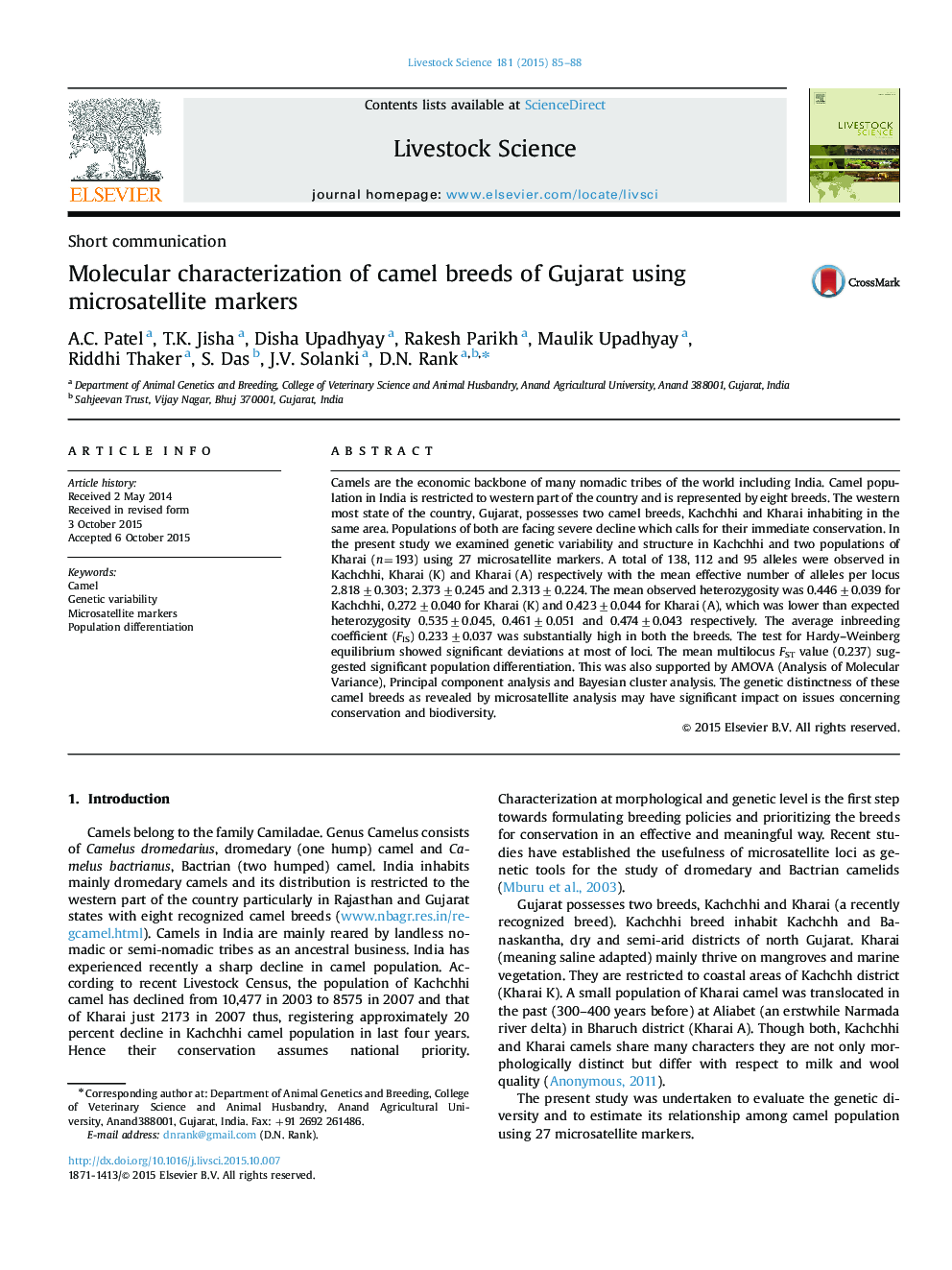| Article ID | Journal | Published Year | Pages | File Type |
|---|---|---|---|---|
| 8502146 | Livestock Science | 2015 | 4 Pages |
Abstract
Camels are the economic backbone of many nomadic tribes of the world including India. Camel population in India is restricted to western part of the country and is represented by eight breeds. The western most state of the country, Gujarat, possesses two camel breeds, Kachchhi and Kharai inhabiting in the same area. Populations of both are facing severe decline which calls for their immediate conservation. In the present study we examined genetic variability and structure in Kachchhi and two populations of Kharai (n=193) using 27 microsatellite markers. A total of 138, 112 and 95 alleles were observed in Kachchhi, Kharai (K) and Kharai (A) respectively with the mean effective number of alleles per locus 2.818±0.303; 2.373±0.245 and 2.313±0.224. The mean observed heterozygosity was 0.446±0.039 for Kachchhi, 0.272±0.040 for Kharai (K) and 0.423±0.044 for Kharai (A), which was lower than expected heterozygosity 0.535±0.045, 0.461±0.051 and 0.474±0.043 respectively. The average inbreeding coefficient (FIS) 0.233±0.037 was substantially high in both the breeds. The test for Hardy-Weinberg equilibrium showed significant deviations at most of loci. The mean multilocus FST value (0.237) suggested significant population differentiation. This was also supported by AMOVA (Analysis of Molecular Variance), Principal component analysis and Bayesian cluster analysis. The genetic distinctness of these camel breeds as revealed by microsatellite analysis may have significant impact on issues concerning conservation and biodiversity.
Related Topics
Life Sciences
Agricultural and Biological Sciences
Animal Science and Zoology
Authors
A.C. Patel, T.K. Jisha, Disha Upadhyay, Rakesh Parikh, Maulik Upadhyay, Riddhi Thaker, S. Das, J.V. Solanki, D.N. Rank,
